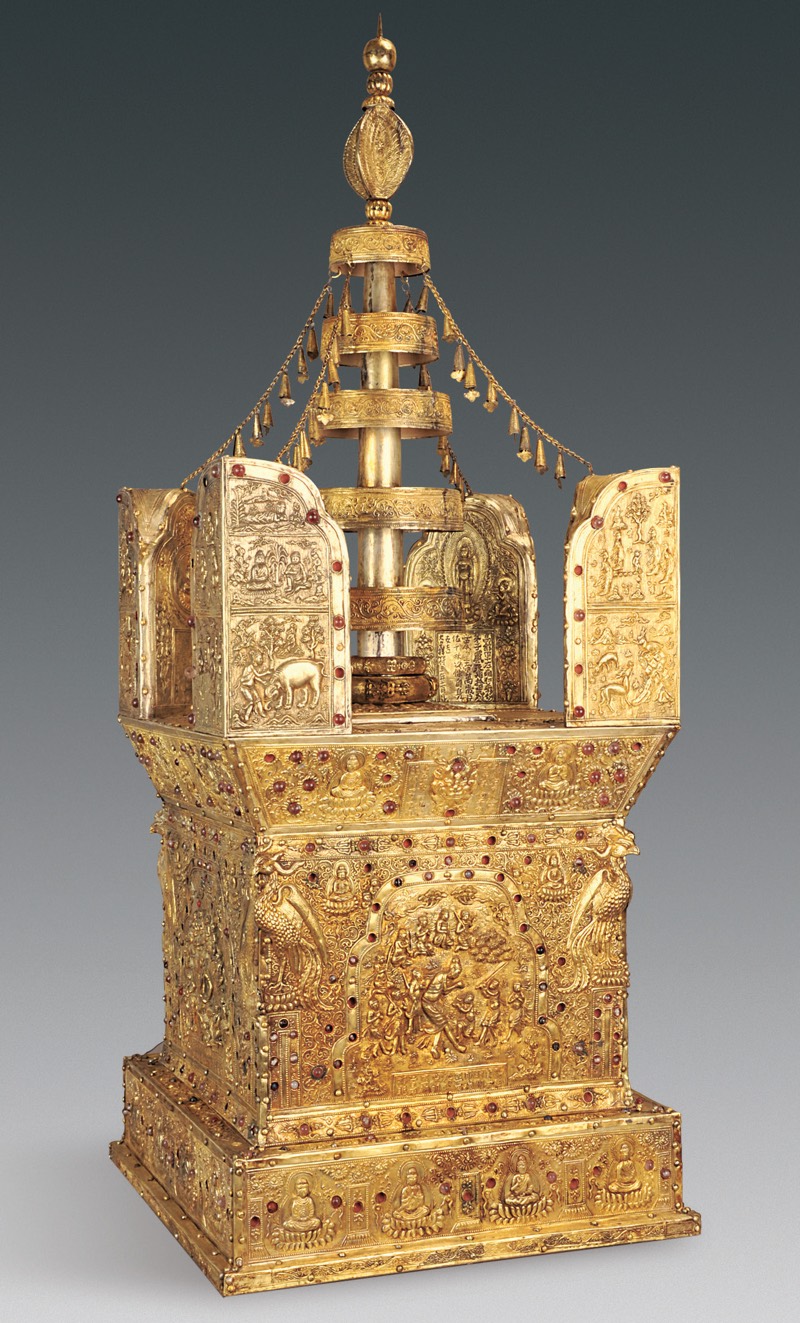Hidden beneath the Grand Bao’en Temple within Nanjing, China might be one of the most profound discoveries to date. A team of archaeologists uncovered a beautiful and elaborate stupa during their excavation. This 1,000 year old stupa is made out of sandalwood and decorated with gold, crystal, and gemstones. What’s fascinating about this disocvery? This particular stupa may have held a skull bone from the beloved Siddartha Gautama, also known as Buddha.

Photo: Live Science
Although this discovery was found in 2015, the English translation of the Chinese article is just now being published.
While excavating a crypt situated beneath the temple, the team found this elaborate stupa. Commonly used for mediation, stupa’s are known as a Buddhist shrine. This particular stupa measures at 4 feet tall and 1.5 feet wide (117 centimeters by 45 centimeters). Currently stupa’s are already valuable, however, this specific stupa is particularly elaborate. Encrusted with gemstones, the stupa has been formed out of sandalwood, crystal, and gold. Covered in crystal, agate and lapis lazuli, this ancient artifact already stands out among the rest. This elaborate design features images of Buddha, as well as names of the creators and people who donated money to its creation. This beautiful stupa is believed to have been created during Emperor Zhenzong’s reign between 997-1022 A.D.
The inscriptions themselves are particularly interesting. Experts believe that these inscriptions were written by a man known as Deming. Inscribed around 1,000 years ago, these inscriptions have been translated to “the Master of Perfect Enlightemnet, Abbot of Chengtian Monastery (and) the Holder of the Purple Robe.” The inscriptions continue on with a passage that describes how Buddha’s remains ended up in China. According to the passage, Buddha entered parnirvana, after which his body was cremated in India. The passage continues to tell us that King Ashoka, ruler of India from 268-232 B.C., decided to have Buddha’s remains divided and preserved. Buddha was then divided into 84,000 shares, and China received 19 of them. Including the bone within the shrine.
Deming continued on with his inscriptions stating that the temple was actually destroyed over 1,400 years ago. The temple was then rebuilt under the order of Emperor Zhenzong and Buddha’s parietal bone was placed within the underground crypt. Within Deming’s inscriptions, he praises the emperor for rebuilding the temple saying, “May the Heir Apparent and the imperial princes be blessed and prosperous with 10,000 offspring; may Civil and Military Ministers of the Court be loyal and patriotic; may the three armed forces and citizen enjoy a happy and peaceful time…”
These elaborate inscriptions claim that the bone does in fact belong to Buddha. However, experts have not proved whether or not this true. Within the original article, experts don’t even mention a hint of speculation. This discovery has been treated with the utmost respect. After discovering the stupa, it has been placed with the Qixia Temple in the hands of Buddhist monks.

